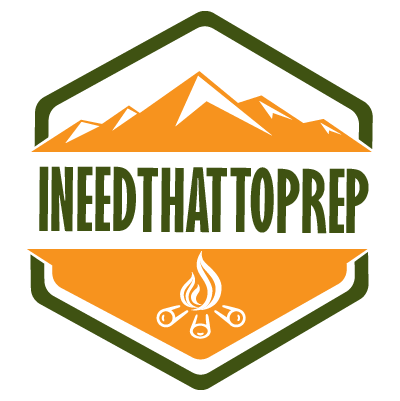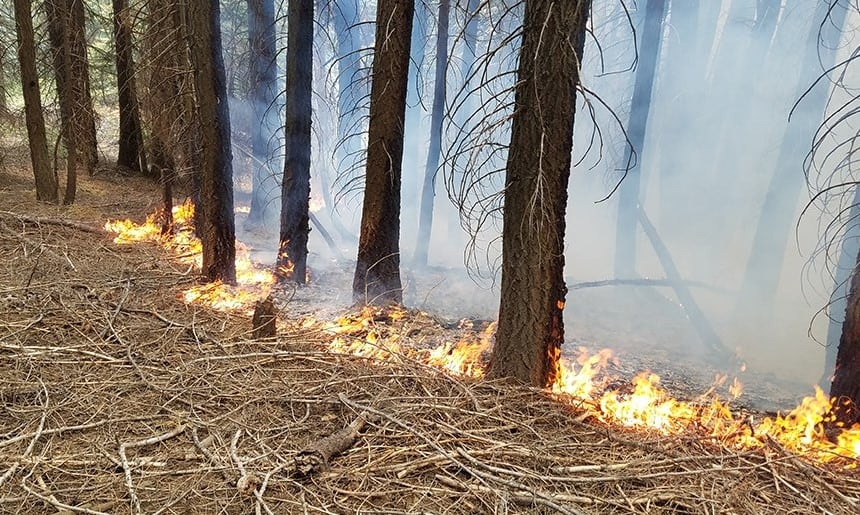Last Updated on April 26, 2023 by Lisa Vargas
It’s that time of year again when the weather gets cold and rainy. If you’ve ever tried to start a fire with wet wood, you know how difficult it can be, and maybe you’ve even failed at it a few times (I know that I have). Having the ability to start a fire under rainy conditions, or just shortly after, can be a serious life-saver.
Today I want to talk about several aspects of how to start a fire using wet wood and some of things that you need to do in order to be able to accomplish your goal. So let’s get started!
Materials You Need For Starting A Fire With Wet Wood
Before you can start building a fire, you need to have the right materials, especially in wet weather. Below I’ve outlined the four basic materials you will need for starting a fire with wet wood.
1. Tinder
Just like when starting a fire with dry wood, you will need some type of tinder to catch the spark and get your kindling going. Some popular pre-made tinder items among preppers is cotton balls coated with petroleum jelly, steel wool (super-fine grade), wood shavings, etc. You can find more ideas by reading the article we wrote about different types of tinder for starting fires.
If you don’t have any pre-made tinder readily on hand, you’re going to need to go out and forage for yourself. Make sure to look under tree branches, under logs, inside dead trees, and essentially any place that the tinder may have had a better chance of surviving the rain and keeping dry.
Tree bark makes for great tinder and can be scraped off with a hunting knife. Depending on what part of the U.S. you live in, will determine what type of tree bark you will be looking for. But what happens when you find some tinder? Won’t it still be wet? Yes! We will talk about the solution to this problem below.
I happen to live in California where Yosemite is only 2 hours from my house. In Yosemite we have several different types of trees in which the bark of certain trees would make for good tinder. Other materials such as dead pine needles, leaves, etc. can prove very useful for starting a fire when it’s wet. But again, if they are wet, they won’t work either!
2. Kindling
In a rainy environment, it’s going to be tough to find any kindling that is dry. Forget about the logs you need to find at this point. If you don’t have any dry kindling, you won’t even get to step three.
The picture above shows the type of kindling that I have to work with in the Sierra Nevadas. You can see all of the twigs laying on ground. Controlled burns are constantly being done to get rid of downed trees and old brush from the floor. But those old, dried and dead branches you see laying on the ground in the picture above have always made for great kindling when building campfires. But when it’s wet, it makes it a little trickier, and we will have to add an extra step as you will see below.
3. Logs
Fuel in the form of logs is what will eventually keep your fire burning hot and burning long. Finding dry logs will be pretty much impossible if you’ve just experienced a downpour. Imagine that you are out in the rain and cold. You are probably ready to give up by now! But whatever you do, don’t give up. You just have to think a little bit outside of the box.
4. Fire starter
If you know anything about building a fire and being prepared, you know that no matter what, you should always have a backup way to ignite a flame. This comes easily if you have a flint and steel, or a ferro rod, or something to that effect that can produce a spark. Since we are living in the modern world, hopefully you will have a little Bic lighter or matches on hand. If not, the above mentioned methods work well, with a little practice.
Building A Fire Using Wet Wood: A Tutorial
Now that you know the materials that you will need, let’s walk through exactly what you need to do to build a fire with wet wood. Please take note, that any kind of wood that you collect for making fire should be completely dead wood and not “green wood” which is still essentially a living tree. Green wood smokes a lot and causes problems when you try and use it. In the wet wood scenario described below, everything is assumed to be dead wood that has been soaked by the rain.
Step 1: Pick Your Fire Site
This is an important part of making your fire. You want to pick a spot that is clear of any brush, tinder, leaves, etc. You also want to make sure you have a nice fire bed to keep the fire off of the wet ground.
Make sure you have have your other materials such as your tinder bundle, your kindling, and your logs close to you at arm’s length so you can grab it quickly when you ignite the spark.
Step 2: Light Your Tinder Bundle
The second step is to take your nicely shaped tinder bundle and light it. Now when I say “light your tinder bundle,” I say that with a bit of hesitation because this portion can be done in a plethora of ways and will also depend on several factors that you either planned or didn’t plan for.
But since we are talking about a survival-type scenario where you didn’t “plan” on the shtf scenario, we are going to assume you don’t have any matches which makes lighting your tinder bundle a little trickier.
It would obviously be nice if you had a Bic lighter in your pocket so that you could easily take the flame from the lighter to the tinder bundle. Your tinder would ignite instantly if it was dry enough.
But as mentioned above, we are assuming you don’t have any matches on hand. If this is the case, you are going to need to come up with another way to get that tinder bundle started without a direct flame; and this is where using char cloth comes into the picture.
Using char cloth is probably one of the oldest, most reliable fire starters since the 1600s. Learning how to make your own char cloth is really easy and is a technique that has been used for hundreds of years to start fire using the flint and steel fire starting method. Make sure to make it ahead of time so that you have some always stored in your bug out bag or vehicle, or a backpack.
There was another article we wrote about how to use char cloth to start a fire because it’s another process in itself that essentially involves catching the spark on the char cloth, then once an ember forms, you transfer the burning ember to your tinder bundle, blow on it a bit to allow oxygen inside, then it should light. You would apply the same principles here when starting a fire with wet wood.
Step 3: Choose Your Fire Structure And Add Kindling
Once your tinder bundle gets going, you are going to slowly start adding kindling to that bundle. Again, the kindling you gathered will more than likely be wet, so if you have gathered wet sticks, you are going to have to take a knife and scrape the outer layer of bark off to expose the inner layer. This should be done ahead of time so that you don’t take too long doing this task and accidentally let your tinder pile burn out.
You should also have in mind from the beginning the type of fire structure you will use to construct your fire once the tinder bundle gets going. There is no right or wrong way, it’s simply whatever you feel most comfortable with or have had the most practice with. There are three traditional ways to structure your fire:
- Log Cabin Fire Lay – Do you remember playing with Lincoln Logs as a kid? Well, this is essentially what the “log cabin” fire lay is.
- Tepee Fire Lay – In this fire structure, you will simply arrange your kindling so that it looks like a tepee. The burning tinder pile will be carefully and quickly placed in the middle of the tepee fire, and then you will begin building around it.
- Lean-To Fire Lay – A lean-to fire lay consists a group of smaller kindling at the base and a group of kindling leaning towards a larger fire-resistance such as another log or a rock.
Step 4: Throw More fuel On Your Fire
By now, you are probably wondering what you are supposed to do about the whole topic of this article – wet wood. It’s the final piece to getting our fire going strong and lasting as long as we need it to. You might have picked up on it earlier when we were talking about kindling.
As with wet kindling, you will need to go out and gather some wet wood, typically the length of your forearm from your elbow to your write, then you will use a hatchet or a knife (depending on how deep the wood is soaked) to cut away at the wet outer layer of bark to expose the dry inner layer. It is this dry inner layer that will ultimately become the fuel for your fire.
You will also need to take your hatchet and cut your bigger logs into various sized pieces. Again, by doing this, you will be exposing the inner dry layers of the log. Once you’ve got various sizes of bigger kindling and logs, you will continue to add to your fire until it gets to the size you want.
Last Minute Thoughts
And there you have it! You now understand how to make a fire using wet wood. As you can see, it’s very similar to making fire under dry conditions, except you have to go the extra step to strip away the wet bark for kindling and chop away at the wet wood to reveal the inner core where the wood is still dry.
Now I realize this all sounds good in theory, but trust me, it’s a lot harder than it sounds. The first time I tried it, I had a really tough time. But after every rain, you should be excited to get out and test your fire making skills.
Let us know if we missed any steps or left anything else out.

